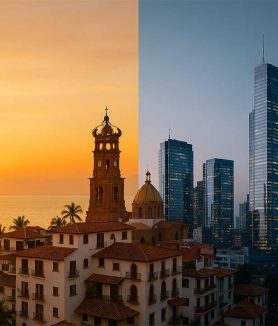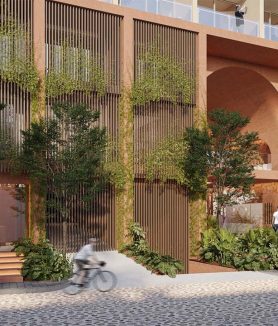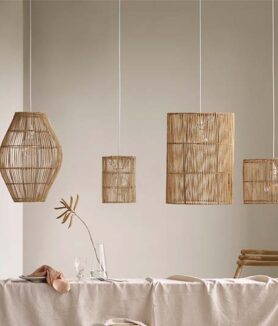La Vegetarian architecture is far more than an aesthetic trend; it is a green revolution redefining how we inhabit the planet. In biodiversity-rich destinations such as Puerto Vallarta and the Riviera Nayarit—where urban growth moves at break-neck speed—this approach takes on special relevance. The core idea is simple yet powerful: weave vegetation into and around built space in a functional, deliberate way.
What Is Vegetarian Architecture?


Despite the quirky name, vegetarian architecture has nothing to do with food. It is a branch of sustainable design that prioritizes plant life, creating living buildings—structures that act as micro-ecosystems and contribute to the climatic, ecological, and human balance of their surroundings.
Historical Roots and Concept Evolution
Although blending vegetation and architecture dates back to ancient practices—think sod roofs or the Hanging Gardens of Babylon—the modern concept of vegetarian architecture gained momentum in the mid-20th century. Since then it has evolved in response to climate change, urban heat, and the need to shrink construction’s environmental footprint.
Concrete Benefits of Vegetarian Architecture
The objectives of this type of design are concrete and measurable:
- Air purification:plants filter pollutants and release oxygen.
- Urban heat reduction:green roofs and façades lower ambient temperatures.
- Energy savings:vegetation provides natural thermal insulation.
- Storm-water management:foliage cuts runoff and relieves drainage systems.
- Biodiversity boost:living surfaces create habitats for birds, insects, and pollinators.
- Human well-being:greenery enhances mental health and reduces stress.
- Food production:some projects add edible gardens or urban farms.
Expanding Typologies & Techniques
This approach has given rise to different architectural expressions:
- Green roofs— extensive or intensive systems.
- Living walls or vertical gardens popularized by Patrick Blanc.
- Vertical forestssuch as Stefano Boeri’s Bosco Verticale in Milan.
- Biophilic designthat draws nature deep into interiors and exteriors.
- Grey-water irrigation networksfor true water self-sufficiency.
Local Inspiration: From the Palapa to Future Architecture

On Mexico’s Pacific coast, the traditional palapa is among the oldest examples of vegetarian architecture. Made with palm fronds, it perfectly suits the tropical climate— providing natural ventilation and blending seamlessly into the landscape. This ancestral wisdom now inspires cutting-edge eco-design in Puerto Vallarta and Riviera Nayarit, where modern architecture teams up with nature to craft fresh, efficient, visually stunning spaces.
Regional Application: Riviera Nayarit & Puerto Vallarta
Implementing vegetarian architecture in new tourist and residential developments here is both an ecological necessity and an innovation opportunity. Embracing this philosophy allows projects to:
- Reduce environmental impact in a high-biodiversity zone.
- Enhance visitor experience by reconnecting guests with nature.
- Increase real-estate value through wellness-oriented, sustainable properties.
- Align urban growth with global sustainability mandates.
Pioneering Architects & Landmark Projects
Among the main exponents of the movement are:
- Emilio Ambasz– a trailblazer of green design.
- Patrick Blanc– inventor of the living wall.
- Stefano Boeri– father of the vertical forest concept.
- Ken Yeang– champion of ecological skyscrapers.
These visionaries prove vegetarian architecture is not only feasible—it is desirable and transformative.
Building to Breathe
Vegetarian architecture invites us to rethink construction and inhabit the world more consciously. In places like the Riviera Nayarit and Puerto Vallarta, where nature takes center stage, adopting this approach isn’t merely innovative: it is urgent. Sowing life into our buildings is not only possible; it is the path toward a healthier, more livable, and more beautiful future.











